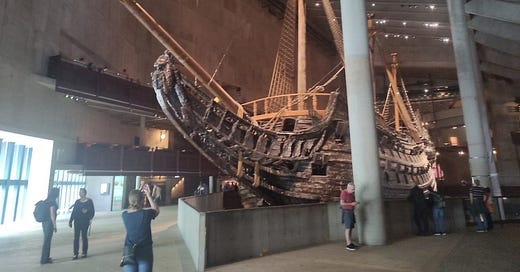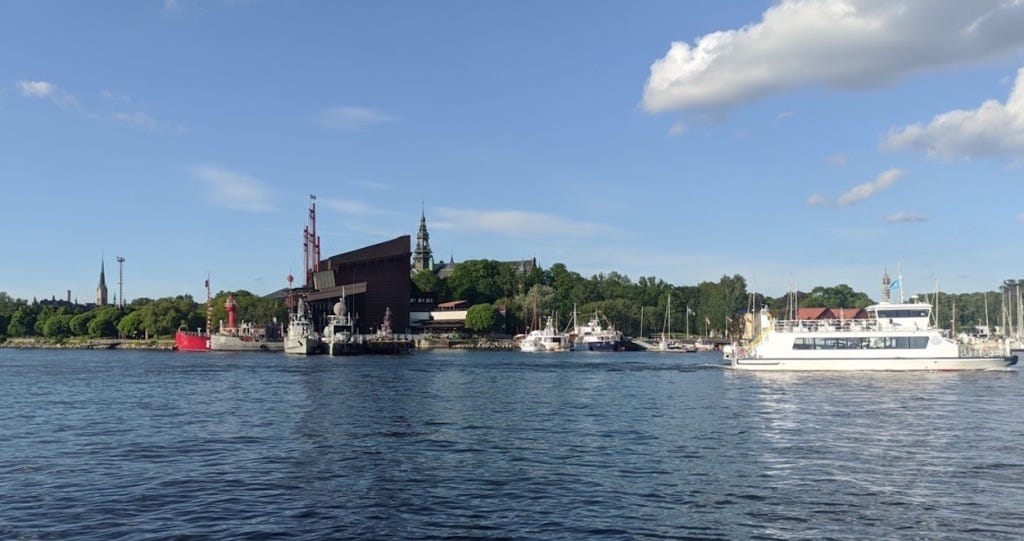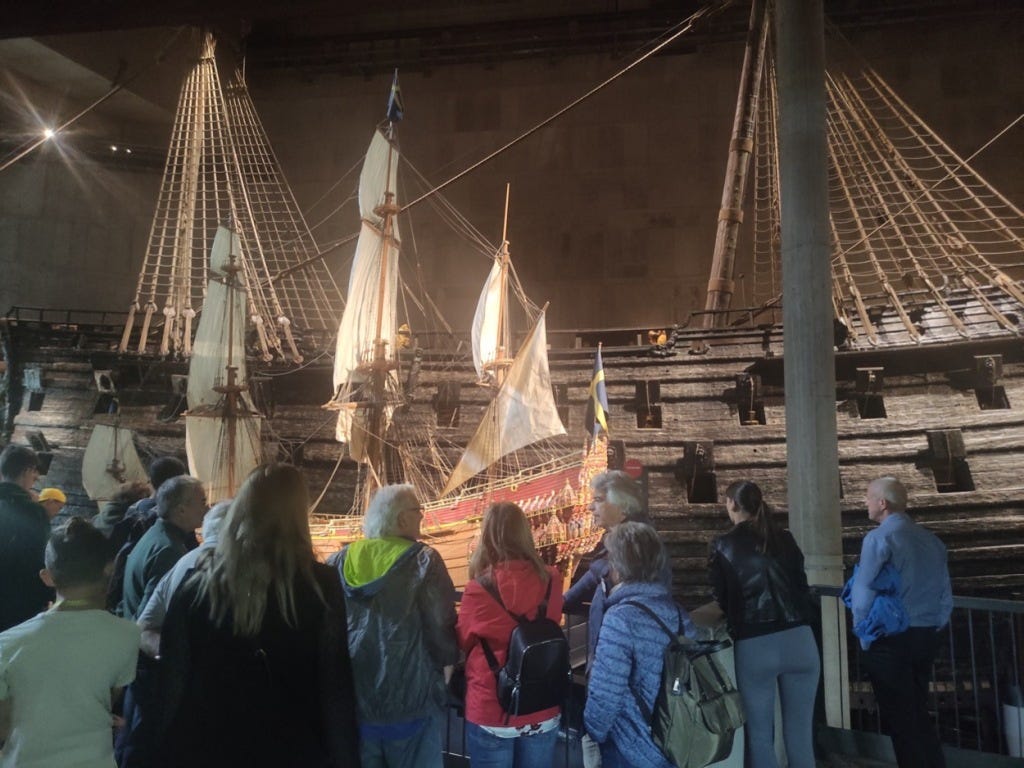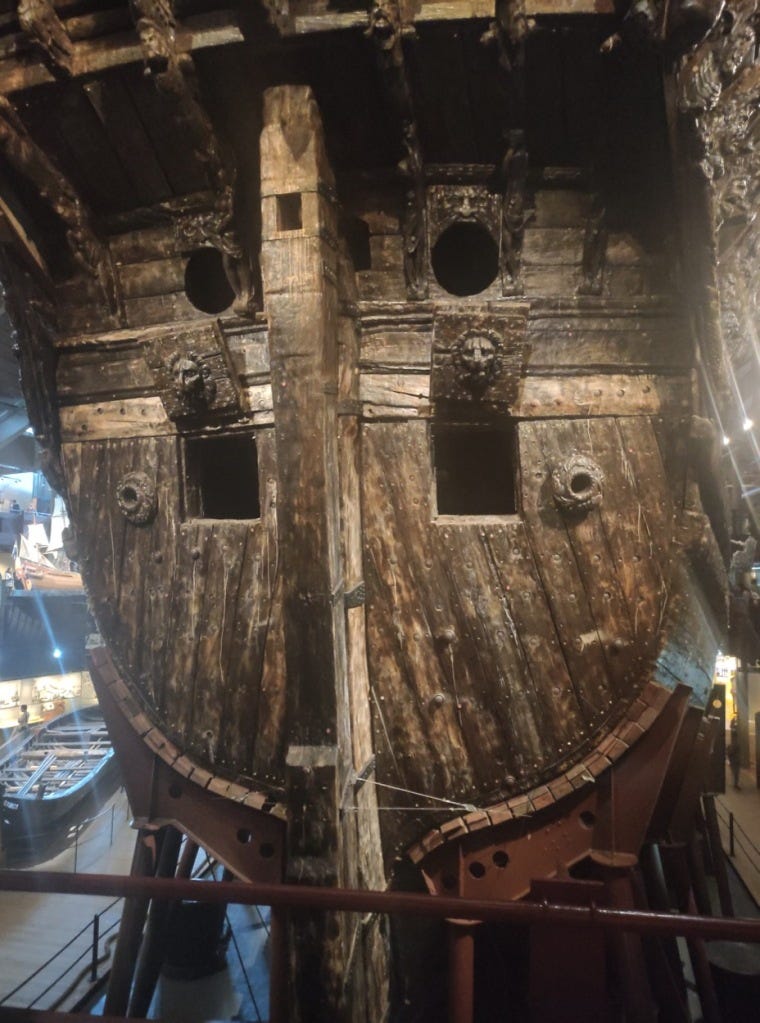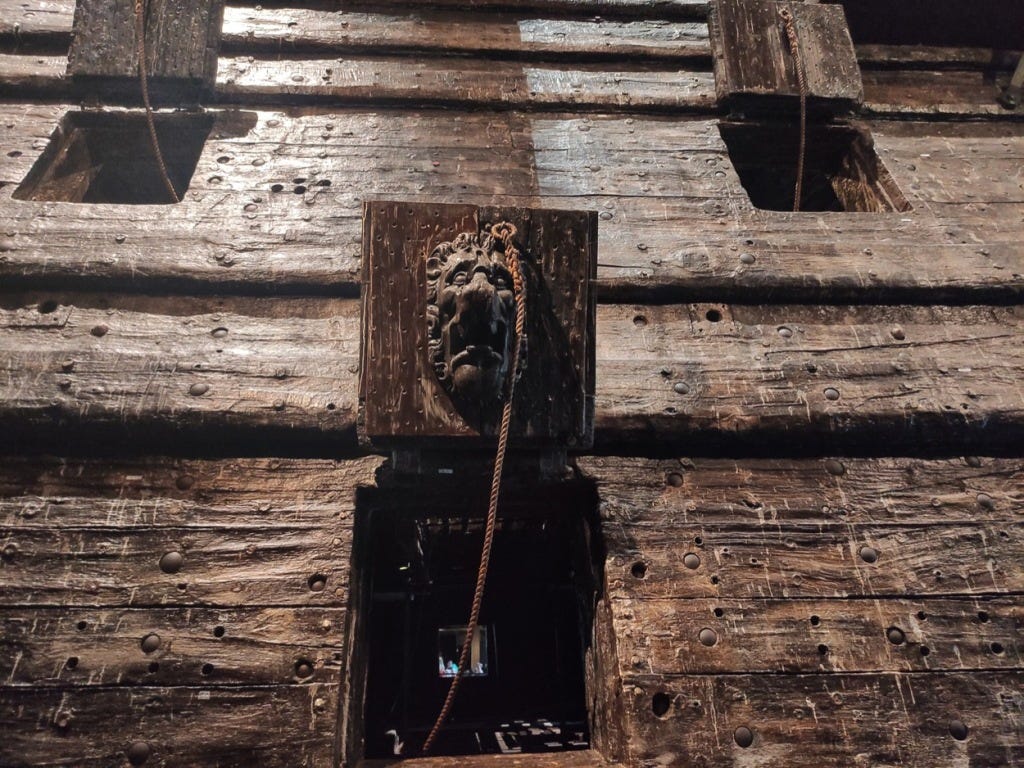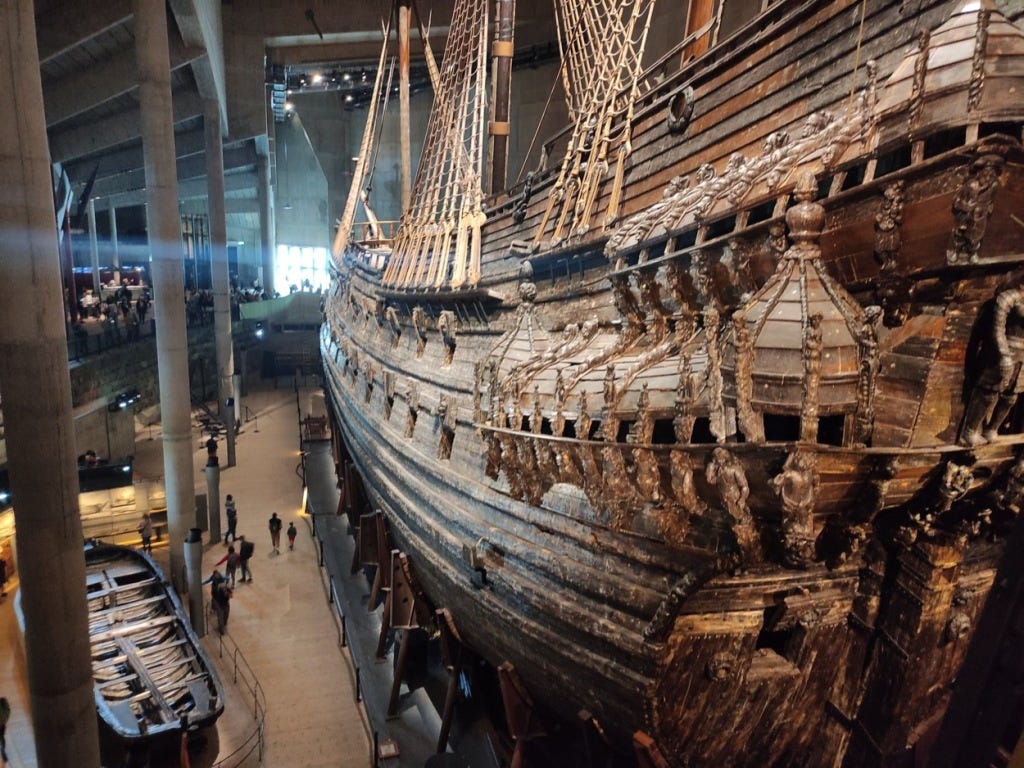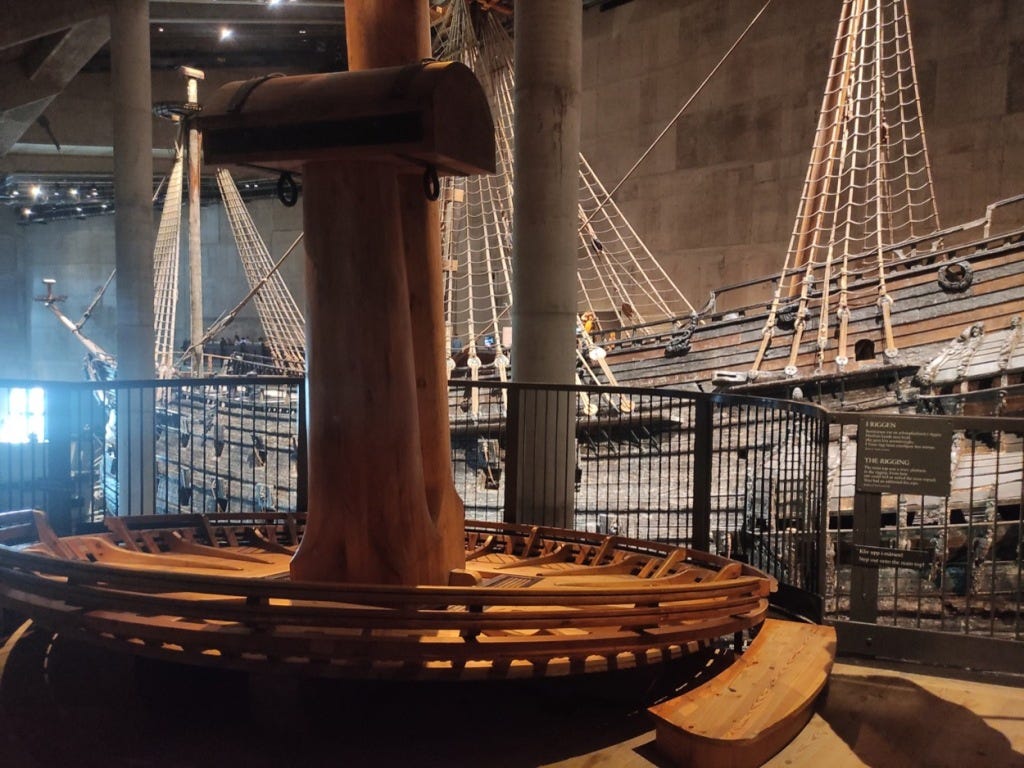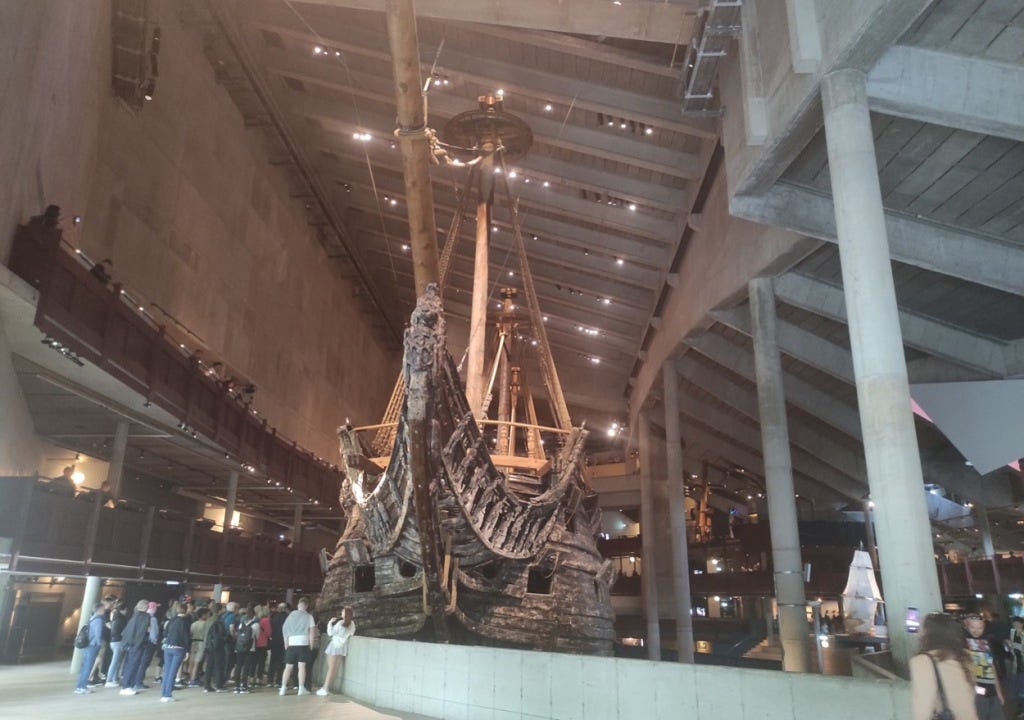Vasa Museum (Vasamuseet), Stockholm
The Vasa Museum wowed me when I visited it over 10 years ago, did so again on this visit and is surely one of the great museums. Many museums in Stockholm are free to visit; this one is not, but the 190kr (£15) is worth it. It's located on the same island as the Djurgarden, to the East of the very centre of the city. "Is it the funny-shaped building?" someone asked me, and well, yes, probably. Note that much of the supporting material, audio and visual, is available from outside the museum - see the bottom of this post for links.
It has long opening hours, 8:30-18:00, to cater for everyone who calls in during the day. I came reasonably early at around 10 (it was a 4km walk there, too, so that stopped me being super early). That may have been peak time for groups, and it was noticeably quieter around lunch time (midday onwards), but I only really noticed it at a couple of exhibits that were blocked with people being informed, and I went back to those later in any case. As for entering, don't be put off if you see a lot of people entering - groups have a separate entrance and queue, and individuals can be in within moments. I wandered up to a self-service machine, pressed the screen for adult entry, held my card to the machine, took the printout, had it checked, and I was in.
I sort of wanted to see the ship last, and to hold the pictures of the whole thing till the end, but it makes some sense to just let you see it. My jaw didn't actually drop, but I certainly stopped (and there is a big, wide space after the entry doors, allowing a lot of people to stop dead if necessary).
The ship was built between 1626 and 1628. It then set sail, made it 1,000 yards or so, sails set and all gunports open, before a gentle breeze rocked it and another one made it capsize, take on water and sink, with 30+ deaths (some captions still suggest 50, so I think the estimate has come down over time). When I last came I remember distinctly describing it as "set sail, fell over, sank and that's why we still have it", and being fairly sure it was bad design. The museum was probably never so definitive. Certainly the ship is not wide enough for the two gun decks and remarkably high ship, but it also didn't have enough ballast (related to the width, as there wasn't enough space), the original designer died, and the king interfered and insisted on sailing soon. None of those are pointed to as the main cause, but since an inquest at the time found no-one guilty, we're left to think it was a combination of those factors (or that it was the otherwise-great King Gustavus Adolphus, and no one was going to blame him).
There are several floors, each of which has exhibits and in some cases, especially ground and lower ground, galleries to wander through. The higher floors are mostly for viewing.
Reconstruction of crew member
To the right of the entrance is the information desk, toilets and lockers, and a cinema with an excellent film about the history of the ship, particularly focusing on the work done to salvage it. Efforts were made periodically, including at the time, but the most successful two were a slightly destructive 17th century set of dives that retrieved a lot of cannon, at the cost of much of the top of the ship, and the 1950s full floatation.
The picture below of the rear of the ship gives a small idea of how high above the water she must have sat. The picture is taken from roughly the water line. There is still a *lot* of ship above.
The ship is so well preserved because it luckily - for us - sank in anaerobic conditions, and much of it sunk into the mud, more so after an early salvage attempt. The usual cause of ship decay, Teredo Navalis or shipworm, does not live in the conditions where the Vasa was. Still, conservation was intense from the beginning and continues, with initial supposition that it had been conserved and was now good replaced by the understanding that 'we have the Vasa, but not forever'.
The enemy, a Polish nobleman, shown in a classic pose of submission
To give an idea of some of the conservation work: First the ship had to be sprayed with water continuously to prevent the wood drying out. Once it was in a temporary home, the water was then replaced with a Polyethylene Glycol (PEG) solution, which meant continual spraying over days or longer, leaving a mist over the ship. Iron rivets had been driven into the ship underwater in the 1950s and those were more recently found to be rotting and damaging the wood. Most have now been replaced by a special steel mixture. The air conditioning within the building was found not to be powerful enough during one especially wet summer, and had to be completely replaced by a better system. And the ship is in a cradle, for which it is not designed, so is settling (if I remember correctly) by a mm each year, and not evenly, so they are currently trying out new bolsters.
It's a lot of work.
A view from higher up - look at the carvings
Look at all those carvings. Incredible. It's 98% original, and you can generally see the newer bits, as they're different colours to the dark PEG impregnated wood, and mostly on the top. And people had to walk out onto that bowsprit to get to a lookout (not pictured) at the end.
There's plenty of sea-jargon to take in, if you want to, though it is generally explained. That said, there are a few exhibits that are a little like reading Greek. An excerpt, talking about one of the sails (preserved, if holey, and on display, of course).
"The port clew, formed by a seized eye on the bolt rope.
The seizing used is a racking seizing...
A part of the port leech rope with the lowest bowline cringle...
Part of the rope with one of the five cringles for the buntlines."
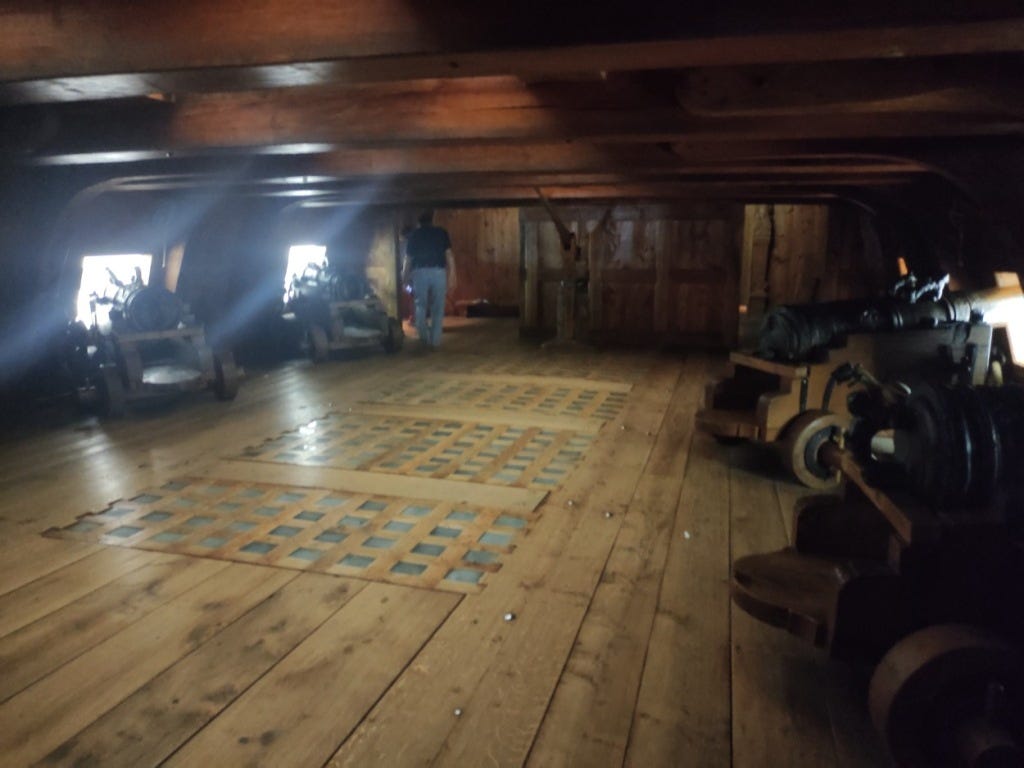
The mini model
It's an extraordinary sight, and I recommend this museum wholeheartedly. I had no doubts about returning, and saved it for my final day in Stockholm. It did not disappoint and I was there several hours. There's free wifi and a restaurant and then the gardens to wander round afterwards, too.
Links
The Vasa Museum's own website.
Vasa Museum audioguide (English) - 15 tracks, available in the museum, via the free wifi.

